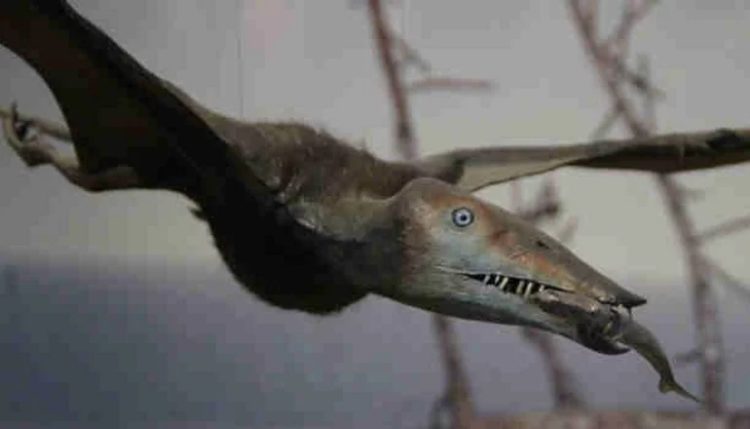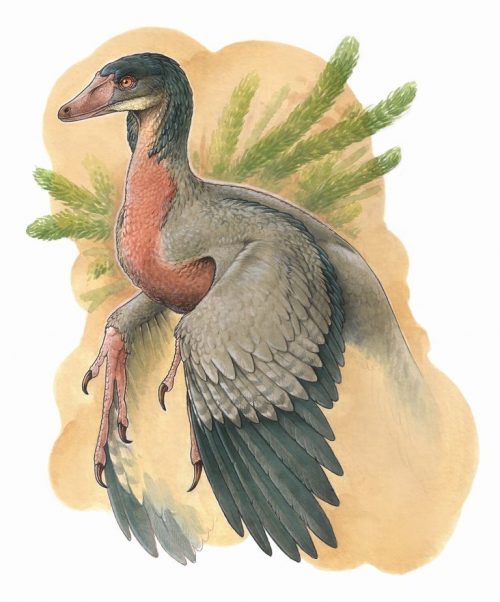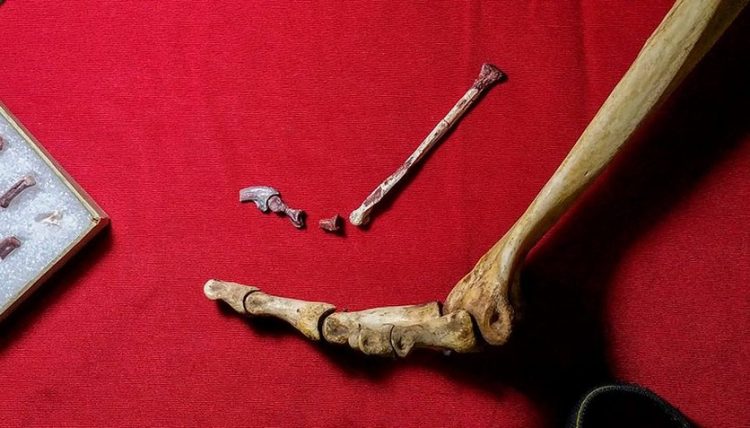If we had it in front of us, we would not believe it. In the mysterious and unfathomable Argentine Patagonia, a small winged dinosaur has been discovered, a kind of half-feathered chicken, with raptor-like legs, teeth, a long tail and, as if it were a chimera, wide membranous bat-like wings.

The surprising discovery was made south of the Ezequiel Ramos Mexía reservoir, in the province of Río Negro, Argentina. It was no more than 1.5 meters high and, as it was learned, the new species would have inhabited the Earth 90 million years ago.
Paleontologists described the animal as carnivorous, and also affirmed that it could provide valuable information for understanding the evolution and emergence of birds. Overoraptor chimentoi is the name of this new member of the group of carnivorous dinosaurs known as paravians, given its proximity to common birds.
Image of the winged dinosaur fossil found

Previously, dinosaurs had been found that marked this transition to birds. Small forms, such as the Buitreraptor, found in another site in Río Negro; other species of intermediate size such as the Unenlagia, with a body mass similar to that of a rhea; and much larger and more dangerous forms such as the Austroraptor.
“Our work shows that, during the transition from dinosaurs to birds, closely related to them, they experienced a diversity of wing structures,” said Federico Agnolin, researcher at MACN-CONICET and the Azara Foundation.

Although it could not fly, its movements resembled those of modern birds during flight. In fact, this carnivore would have used its wings to balance itself and run more easily to attack its prey.
“This animal had a very sharp claw on its index toe, which was probably used to attack its prey, and it had an elongated and graceful leg, which indicates that it was a running animal,” said those who carried out the study.

Federico Agnolin described its legs as very similar to those of a raptor, with extremely long and robust upper limbs, similar to those of the birds we know today.
There are dinosaurs with wings and the almost complete preservation of this specimen shows how the different wing structures (feathered versus membranous) influence the skeleton. It seems that the origin of avian flight is more complicated than we thought.

Everything about winged reptiles is really wonderful. Compared to other dinosaur species that are better known and studied, it has taken scientists a bit longer to agree on these creatures, because archaeological findings have not been as abundant and enlightening.
Nevertheless, today there is enough information available about them, and most specialists agree on the generic characteristics of the other kings of the Earth, long before the first birds as we know them today appeared.
Share this story with your family and close friends. We now know that the southern continents were inhabited by various paravians, that is, winged dinosaurs, which reveals a great diversity of living forms that we are just beginning to know.




